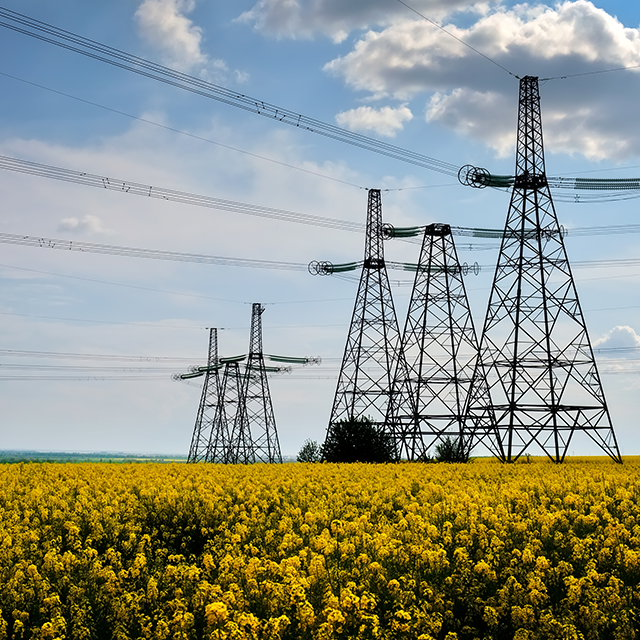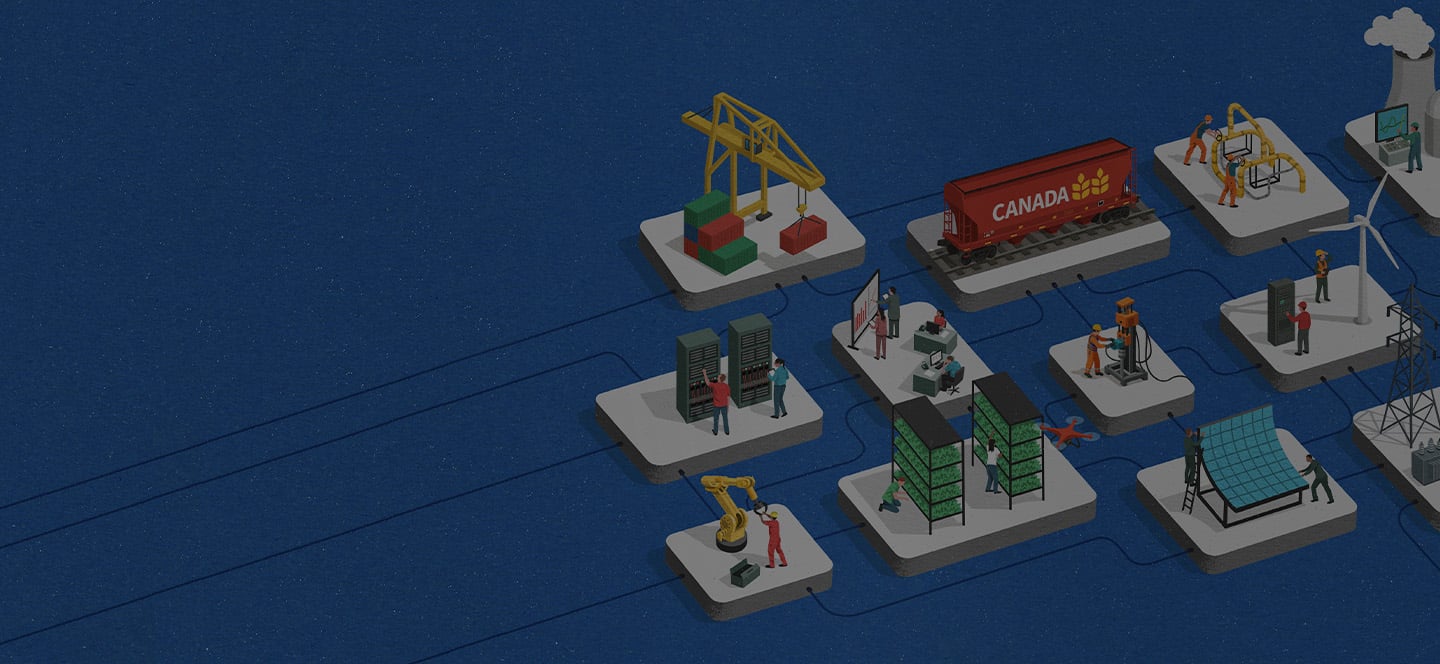From the lingering shockwaves of the Redwater decision, to more recent developments involving COVID-19 and reduced global oil demand in the face of continuing egress and access-to-market constraints, the Western Canadian oil patch is facing unprecedented levels of difficulty and uncertainty. As a result, it has become increasingly commonplace for oil and gas asset owners to be faced with insolvencies affecting their co-owners or co-working interest participants (WIPs). This blog provides an overview of the main statutory environmental liability risks for WIPS, and an assessment of the impacts of recent legislation on potential liability for WIPs in this context. We conclude with a high-level quick reference checklist which provides some practical legal, commercial and operational tips for WIPs to manage such issues.
1. AER Abandonment Orders
It is common for WIPs to first learn of their co-owner's financial difficulties or ceasing of operations when abandonment orders are issued by the Alberta Energy Regulator (AER). Currently in Alberta, there are no universally mandated timelines for carrying out abandonment work at designated oil and gas sites, though there are certain triggers for abandonment pursuant to section 3.012 of the Oil and Gas Conservation Rules. This is where the abandonment order comes in to play—abandonment orders are the primary tool used by the AER to direct abandonment work, which can be imposed on the licensee or on any WIP that is not the approval holder pursuant to section 27 of the Oil and Gas Conservation Act (OGCA). Abandonment orders are made on an ad hoc basis, taking into account the unique issues and requirements of the applicable site. Failure of the licensee or WIP(s) to carry out required abandonment and reclamation work may result in the AER and Orphan Well Association stepping in to conduct the work and subsequently issuing a cost recovery order to the WIPs (on the basis described further below).
It is common for the AER to issue abandonment orders where a licensee is determined to no longer be capable of prudently operating the licensed assets. Aside from instances where a licensee has formally commenced insolvency proceedings, key factors that typically go into such a determination by the AER include: (i) the limitation or loss of rights to operate the site under applicable regulations and AER directives, (ii) mounting non-compliances resulting in the AER being concerned about the licensee's operational capabilities, and/or (iii) communications directly from the licensee that they are seeking to reduce or cease operations. The issuance of an abandonment order is also the first step in the AER designating eligible sites as orphans.
2. Risk Exposure For Current WIPs Under OGCA
Pursuant to the OGCA, any or all WIPs may be held responsible for carrying out the work specified in an abandonment order. The starting position is the costs associated with such abandonment operations would be shared by current WIPs in accordance with their proportionate working interest share in the applicable well or facility pursuant to section 30 of the OGCA (which mirrors the typical apportionment of risk in the Canadian Association of Petroleum Landmen (CAPL) industry standard joint operating agreements). However, where the licensee or one or more WIPs are insolvent, it is possible that the AER may order the solvent WIPs to foot the bill and pay more than their working interest share under a cost recovery order (even where the solvent WIP's interest is nominal). Failure of a WIP to pay its share of such costs within the timelines prescribed by the AER could result in a 25 percent penalty being applied to its share of the outstanding amount or other types of fines being imposed.
In this case, the solvent/remaining WIPs may consider the following:
- Application to the Orphan Well Association (OWA) for reimbursement. A WIP who has incurred more than its share in carrying out abandonment and reclamation operations pursuant to an abandonment order may be entitled to reimbursement from the orphan fund for the defaulting WIP's share. There is currently no set timeline for reimbursement and no guarantee that 100 percent of the amount claimed for reimbursement will be recoverable. In 2019, the OWA paid out over $5.1 million in such types of claims to WIPs.
- Verification of Working Interests. All WIPs should confirm the accuracy of the AER's WIP information and the proportionate share applied under any cost recovery order. Due to historical record-keeping issues and complexities in the administration associated with the transfer of oil and gas ownership interests, the AER and other public/governmental records may not reflect the actual current ownership position of WIPs. In this case, it is important for affected WIPs to contact the AER and provide evidence to support any request for correction of AER WIP information.
- Assuming the License. Solvent/non-defaulting WIPs may also consider assuming the relevant licenses which are the subject of the abandonment order by way of an AER-directed transfer without necessarily increasing its proportionate share of ownership. Doing so would require the WIP to first ensure it meets applicable AER eligibility requirements under the AER's Directive 067, and that it has a valid entitlement to the underlying leased substances. The main benefit of this approach for the WIP is increased control, as the WIP will be in a position to either produce the well or direct/conduct the abandonment work. Factors for WIPs to consider in determining whether it is desirable to pursue such a directed transfer include: (i) whether the required abandonment can be carried out within the timelines provided for in the order (or whether an extension or variation would need to be sought from the AER), (ii) whether the WIP has the financial and operational resources to take over the license and produce the site, (iii) other regulatory obligations the WIP may assume as it moves from non-licensee to licensee, (iv) impacts on the WIPs liability management ratio; and (v) the potential for increased risks associated with end of life environmental liabilities. WIPs considering this approach should ensure they have obtained legal advice to understand the differences between assuming a license by this method vs. assuming a license out of formal insolvency proceedings (including the limitations of what the AER can and cannot do in relation to processing such transfers).
3. Risk Exposure for Former WIPs
Section 31 of the OGCA enables the AER to look back and deem a former WIP (i.e., a party that disposed of its working interest to one or more successor WIPs) to be a current WIP for purposes of abandonment and cost recovery orders. While former WIPs would typically have received a broad indemnity from the buyer/successor WIP under the applicable sale agreement (covering past, present and future environmental liabilities) such indemnification is not helpful where the buyer/successor WIP is insolvent (and where provision has not been made for an environmental holdback, remediation trust or similar environmental liability funding or insurance arrangement). While we are not aware of instances where former WIPs have been deemed in this manner under the OGCA, we would note that:
- Even before COVID-19, there has been enormous pressure mounting on the Alberta Government, the AER and the OWA to address the proliferation of orphaned sites, which may ultimately result in an increased willingness of the AER to utilize tools such as section 31 of the OGCA to address unfunded liabilities. As of June 2020, the OWA lists in its orphan inventory 2953 wells for abandonment and 3085 orphan sites requiring reclamation.
- There are also various provisions in the Bankruptcy and Insolvency Act and the Environmental Protection and Enhancement Act (EPEA) (as described below in section 5) which provide grounds for past WIPs to be held liable for environmental liabilities, which may in part explain why section 31 of the OGCA has not been invoked by the AER to date.
- This issue is currently being considered in the Sequoia Resources Corporation bankruptcy proceedings, and as such is being followed closely by industry.
4. Red Flag Listing—OGCA Named Person Declarations
As we discussed recently in April 16's blog regarding Bill 12, the AER also has the authority under the OGCA to make a declaration naming directors, officers, agents and other persons in control of a licensee that has contravened an abandonment or other order of the AER, or failed to pay certain types of amounts owing to the AER. The broad interpretation of what constitutes "control" for purposes of such authority means that senior management of current WIPs and potentially controlling shareholders could be the targets of such a declaration. Being named in this manner has the effect of "red flagging" the named individual, as the individual is added to a publicly available list on the AER's website and allows the AER to impose restrictions or limits on the present licensee and any other licensee in the future due to the individual's involvement. Currently there have only been 20 of such named person declarations going back to 2005, which underscores the severe and exceptional nature of this measure.
5. Environmental Protection and Enhancement Act
The EPEA allows the AER to issue various types of environmental protection orders (EPOs) to require the clean-up of spills or contaminated sites, and in connection with the conservation or reclamation of a site. The scope of persons that can potentially be held responsible under EPOs is broad and may encompass both current and previous WIPs. The potential liability for WIPs under EPEA is strict, joint and several and not based on the WIP's proportionate ownership share.
Historically and based on our experience, while there have been many instances of current WIPs being named in an EPO, it has not been typical for an EPO to be issued for former WIPs or in any instance where the costs of the environmental liabilities could be covered under the orphan well fund. However, given the current state of the market and the growing gap between the number of orphaned sites and the funds available under the OWA's orphan program, it is possible that the enforcement measures available to the AER under EPEA could be more readily applied to WIPs (both current and former) going forward particularly in circumstances where there are extraordinary unfunded environmental liabilities.
6. Surface Rights Act
Pursuant to the Surface Rights Act (SRA), WIPs may in certain circumstances be held liable to pay unpaid surface lease payments to landowners. Potential exposure under the SRA is another reason that WIPs need to carefully consider how to structure oil and gas M&A transactions and factor in AER license transfer issues. For example, a former WIP that has sold its beneficial interests in the surface lease and underlying assets but remains on legal title for surface rights will presumptively be liable for surface back payments, and remaining on as the legal title holder as such may also factor into determinations of responsibility under the OGCA and EPEA.
7. Implications of Bill 12 for WIPs
The Liabilities Management Statutes Amendments Act (Bill 12) which came into effect on June 15, 2020 layers on some additional and significant potential risk exposure for WIPs dealing with the prospect of an insolvent licensee. As we described in Alberta Amends its Approach to Liability Management, in addition to Bill 12 clarifying the OWA's authority to operate producing assets and conduct a broad spectrum of site remediation activities, a key aspect of the new legislation is that where the AER concludes that the licensee is not meeting minimum operating obligations, it can require WIPs to take measures to prevent impairment and damage and fulfill the duties of the licensee. Bill 12 gives the AER broad discretion to impose any terms or conditions that it determines are necessary in connection with making orders for WIPs to comply with such obligations.
Some concerns that we have encountered so far in looking at WIPs potentially being required by the AER to "step-in" at a licensed site as such include:
- whether the WIP has adequate insurance coverage, and associated timing issues in obtaining coverage where current insurance policies are determined to be insufficient;
- whether the WIP will be able to comply with AER orders without breaching covenants in other agreements (e.g., covenants and restrictions/requirements under credit facilities, or in various types of development or co-agreements which feature AMI, non-compete or similar restrictive covenants);
- practical/technical and safety concerns regarding the ability of a WIP to carry out preventative activities in situations where accurate records regarding the historical operations of the site are not readily available;
- how WIPs are to reconcile these types of orders with the enhanced role and potential for involvement of the OWA; and
- in an M&A context, how to modify standard purchase agreement terms to account for Bill 12 (particularly in relation to reps and warranties, interim covenants and closing conditions).
8. Government Measures and Site Rehabilitation Program
Since the onset of COVID-19, provincial and federal governments have implemented a wide variety of measures and programs that have had implications for the oil and gas sector, such as in relation to the suspension of environmental and regulatory reporting requirements and programs to access capital. Such measures and programs are intended to help energy companies navigate complex challenges associated with COVID-19, and may in some cases help alleviate operational and insolvency concerns in the short term.
In addition to the above, WIPs may also be able to directly access the Alberta Site Rehabilitation Program to obtain grants for third-party contractors to complete abandonment and reclamation work. Alberta Energy has confirmed that where a WIP has been named in an order (e.g., due to the insolvency of the operator and failure to comply with outstanding abandonment or compliance work), a WIP can sign off on completion of the work in place of the licensee under the Site Rehabilitation Program and may be the client under the contract with a service provider for such work. Given the increased potential exposure of WIPs resulting from the recent Bill 12 changes, funding under the Alberta Site Rehabilitation Program could be a welcome source of relief, particularly at a time when many WIPs are facing short term liquidity issues and a lack of available funds to direct to unplanned remediation activities.
Conclusion and WIP Insolvency Preparedness Checklist
The AER has a broad array of compliance and enforcement tools in relation to addressing abandonment and reclamation work which have been enhanced under Bill 12. Due to the extraordinary turmoil currently facing the oil patch, such tools may be utilized in novel ways which may result increased exposure for WIPs in respect of environmental liabilities.
To assist WIPs in positioning themselves for counterparty insolvency issues and to respond to such recent industry and legislative developments, below is a checklist which outlines a variety of practical steps that WIPs can consider taking. This checklist is by no means exhaustive, but is intended to assist your organization in responding to the evolving WIP risk landscape and in periodically checking for blind spots with respect to your co-owned properties.
Legal Due Diligence
- Review high-risk co-ownership relationships with legal counsel to assess your rights under your co-ownership/operating agreements (CAPL and non-CAPL), such as in relation to:
- rights of WIPs to remove the operator, and constraints on doing so in the context of insolvencies that have been addressed in recent case law (which we covered in ABQB Clarifies Test for Lifting the Stay to Replace an Insolvent Operator);
- rights on the operator to claim force majeure, including exclusions (lack of finances), formalities/notice requirements, and how the duty to mitigate applies in the context of the COVID-19 pandemic;
- rights of WIPs regarding decisions to shut-in production, particularly where doing so creates risks of underlying leases being terminated;
- rights of WIPs to monitor financial health of operator and request information/records regarding joint operations;
- implications of upstream disruptions and operator insolvency issues on midstream/transportation contracts (e.g., events of default; availability of relief from different types of tolls); and
- funds being held in the joint account in trust for WIPs, and different types of claims and remedies that WIPs will have to the same in the event of the operator becoming insolvent.
- Consider whether land team or consultant needs to conduct review of non-100 percent owned assets for accurate records of current WIP interests.
- Inventory of existing AFEs regarding abandonment/reclamation work, status of work programs under existing AFEs and identification of delays or other issues which could lead to AER compliance or enforcement orders.
- Assess and quantify potential exposure associated with co-ownership of high risk or highly contaminated sites.
- Identification of all existing AER compliance or enforcement orders issued to operator and other WIPs and status of activities being undertaken to comply with orders and rectify underlying issues.
- Coordinate with internal or external legal/regulatory team to ensure system is in place to monitor AER bulletins and legislative/regulatory developments affecting WIP risk exposure, including with regard to (1) the AER's Licensee Management Rating program (and the manner in which the AER manages financial security for the costs of abandonment and reclamation obligations), and (2) how long non-producing/shut-in wells are permitted to remain in such state before they will be subject to abandonment orders.
Operational/Technical
- Formulate and regularly update contingency plan (on an asset-by-asset basis), including to deal with scenarios where key upstream infrastructure may be suspended as a result of licensee/operator insolvency.
- Schedule regular discussions with co-owners to understand the risk of licensees/operators and other WIPs becoming insolvent.
- Evaluate the adequacy and applicability of insurance coverage in event you are required to step-in to carry out work on a non-operated site.
- Abandonment/reclamation plans with other WIPs to manage shared responsibilities in carrying out closure work, including how decisions will be made on applicable sites should one of the WIPs become insolvent, and entitlements remove or salvage equipment from sites following completion of abandonment work.
- Ensure you have adequate operational records and copies of any site-specific emergency response plans.
- Take proactive steps to address any high risk sites, such as ensuring timely responses to any non-compliances and addressing of liabilities.
- Internal financial review to determine if sufficient funds are available to take on unplanned work (e.g., where ordered to do so by AER under Bill 12 authority).
When Licensee/Operator Has Commenced Insolvency Proceedings
- Ensure you understand the impacts of any outstanding AER orders on the ability to recover any amounts owing.
- Keep informed of the insolvency process using monitor/receiver/trustee's website and court filings (e.g., to ensure your ownership interests are properly recognized).
- Consider what steps need to be taken to ensure equipment and inventory is secure/not vulnerable to theft or vandalism from sites that may no longer be in operation.
- Communicate with the monitor/receiver/trustee to determine whether they intend to operate the assets and plans regarding any sales processes.
- Consider implications of different potential post-insolvency outcomes for the assets, including if assets are sold to a third party under a court-supervised sales process, if the assets remain with the defunct licensee, and/or if the contracts relating to the assets may be subject to a full or partial disclaimer (including as a result of recent case law which we summarized Environmental Liabilities Open the Door to Partial Termination of Agreements During Insolvency).
Bennett Jones has extensive experience assisting clients on insolvency, regulatory and commercial oil and gas matters. If you have any questions about the information in this article, please contact the authors or a member of the Energy or Crisis & Risk Management industry teams.



















